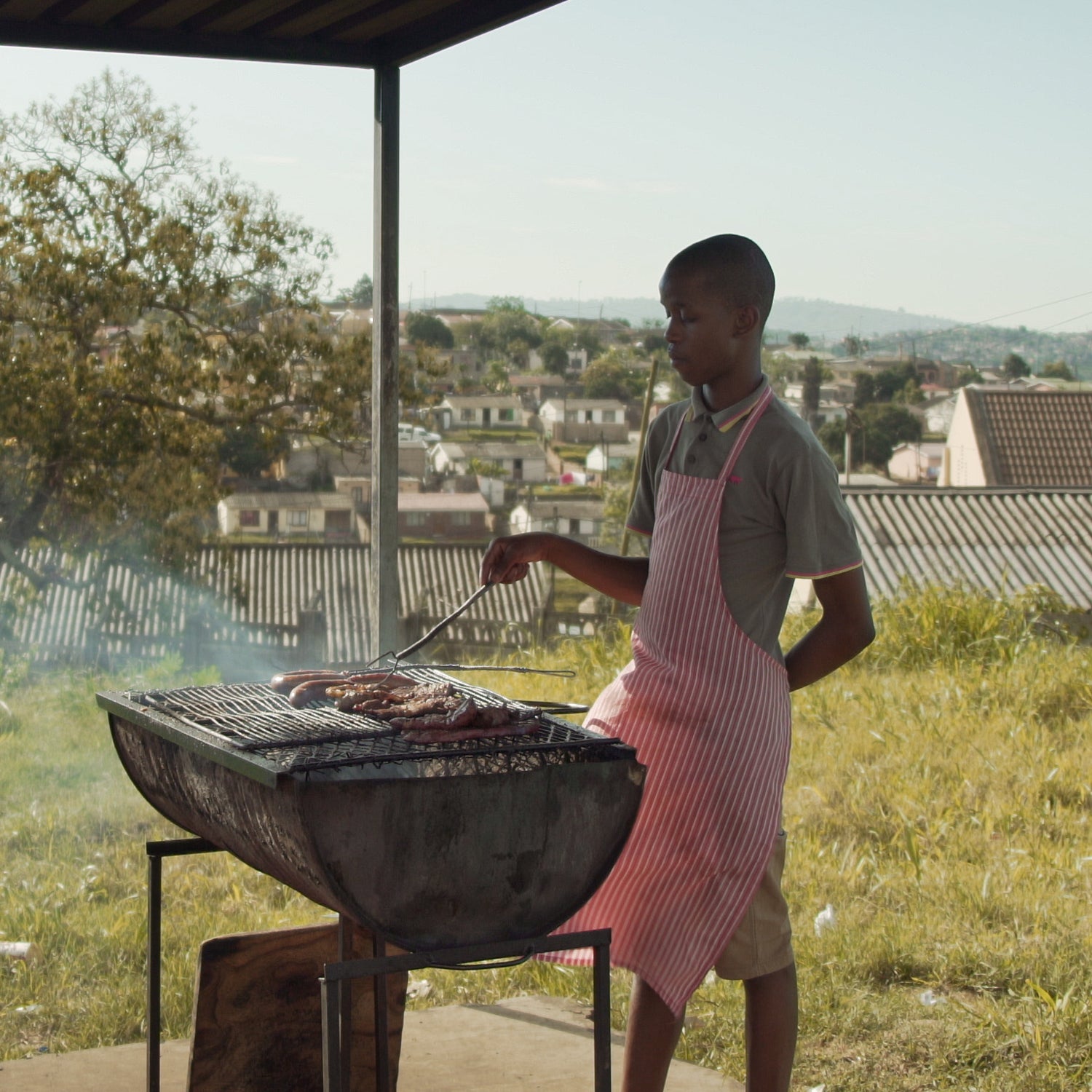Four years ago, when Australian filmmakers were road-tripping through Texas, the pair became captivated by hole-in-the-wall barbecue joints. Salleh loved the intensity and focus the pit masters brought to their craft, so much so that the duo started interviewing and filming the men and women behind the Lone Star State’s proudest food tradition.
In the years since, they’ve made two documentaries about smoked meats, the newest of which recently premiered on Netflix. is a global exploration of that most basic culinary technique—cooking meat over fire—with all the sensual food shots you’d expect. The two-person film crew spent two years traveling to 13 far-flung spots, including locations in Armenia, Mongolia, Japan, and Uruguay. In some locales, the meat was cooked over hot coals; in others, it was buried in the ground. In Armenia, the meat is cooked on giant swords rotating over flames.
Those in the American South may be thinking, “These methods aren’t barbecue.” And it’s true: In places south of the Mason-Dixon, using the word barbecue to describe anything besides slow-smoked meat is a sin. But Salleh and Tucker are from Australia, where anything cooked on a grill is considered barbecue. And really, what matters is the result: You’ll be craving the ribs, chops, and flank steak no matter where you’re from.
The documentary is an obvious draw for meat lovers, but it’s also about human connection. “There’s something about cooking meat over a fire that brings people together,” says Salleh. The pair find evidence of this is places ranging from a refugee camp near the Syrian border to the remote Mongolian countryside.
Want to become a worldwide barbecue connoisseur? Here are some of Salleh’s must-hit restaurants and tips for finding the best grilled meats.
Texas
You really can’t call yourself a barbecue aficionado if you haven’t spent time sampling the state’s brisket and smoked sausages. Salleh recommends in Wichita Falls, in Lexington, and in Austin.
Japan
Where American barbecue is an inexact science, Japanese yakitori is the opposite. Salleh says it was fascinating to watch the precision with which the most famous yakitori chefs practiced their craft. The results are exquisite, making Tokyo a must for anyone who appreciates perfectly grilled meat.
Armenia
Pork is skewered onto swords that are turned over an open flame much the way a player might spin a row of foosball players during a contentious match. This is the style that got Salleh interested in this project, and it’s the one he’s hoping to perfect in his Brooklyn backyard.
New Zealand
You might think Australians hold the title for rowdiest barbecue parties, but Salleh says that title actually belongs to the Maori in New Zealand. “They cook their meat in the ground, and it’s a three-day process and celebration. The concept of family there is very large; a family may have 200 to 300 people, and if there’s a barbecue happening, everyone within a 50-mile radius is coming.”
Uruguay
A traditional Uruguayan asado is such a big feast that it will give you the meat sweats, but it’s worth it. Steaks and sausages are roasted over open flames, the way South American gauchos (cowboys) have been doing it in the field for generations.
Try It Yourself
This recipe comes from Ricki Motta, chef at , a winery in Garzón, Uruguay.
The Meat
The better your relationship with your butcher, the better your final product will be, says Motta. As for meats, cuts that have a short cooking time (steak eye, loin, sirloin) will be cooked on the grill or griddle. Whole cuts (whole steak eye with bone, beef rib) that will endure prolonged cooking at low temperature can be cooked on the grill or using the dome method described below. For a full rundown on how to build each of these cooking methods, check out Francis Mallmann’s book .
The Technique
The Dome
With this technique, the chef cooks meat directly on the surface of a metal dome that’s placed over an open flame. This allows for a slow cooking time that progressively smokes the meat and melts the fat. Motta recommends frequently basting your ingredients with a 15 percent salt brine. He augments his with fresh herbs and garlic and brushes it on at least every hour. The brine rehydrates the meat, which otherwise can dry out during the long cooking time. Timing will vary depending on the size and hardness of the cuts, but this is an all-day affair, because the items are smoked rather than roasted. Plan for at least ten hours.
Griddle
The griddle uses high heat to sear meat quickly. With the griddle, you want to achieve a golden crisp on the outside while keeping the inside juicy, says Motta. It works well over a campfire: Wait until your coals are piping hot, place the griddle over the coals and let it heat up, and then sling your meat onto it. Flip the meat after a few minutes.
Grill
“For the grill, we choose products that will have a medium cooking time,” says Motta. Think thick rib eyes or pork tenderloins. In Uruguay, grills are set up over wood fires, so you get the lovely smoky flavors and a tender final product. Serve your grilled meats with chimichurri, the traditional Uruguayan and Argentinian sauce made from blended herbs like garlic and sage.
You’ll find as many different chimichurri recipes as there are chefs in Uruguay, but this one is Motta’s go-to. It makes a big batch, so invite your friends over.
Ingredients
- 6 cups parsley
- 4 cups oregano
- 2 cups thyme
- 2 cups sage
- 1 cup rosemary
- 2 cups olive oil
- 4 cups sunflower oil
- 1/2 cup grated garlic
- Crushed red pepper
- Salt and pepper
- 2 cups wine vinegar
Chop all the herbs and place in a container with a few teaspoons of the oils. Add the grated garlic and mash into a paste. Season with red pepper, salt, and pepper. Gradually add the vinegar. Mix well.


